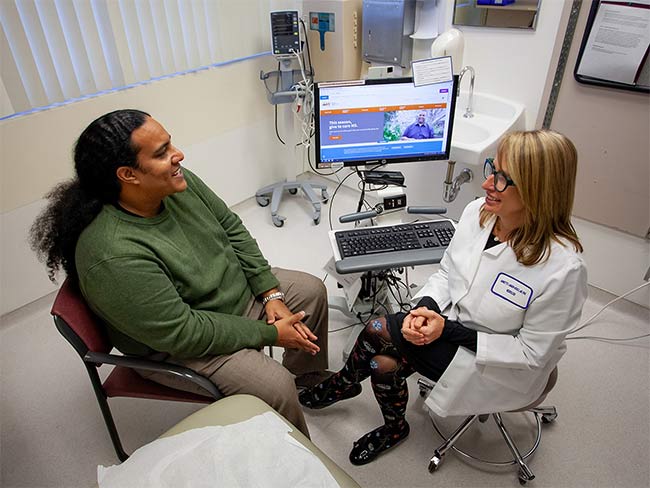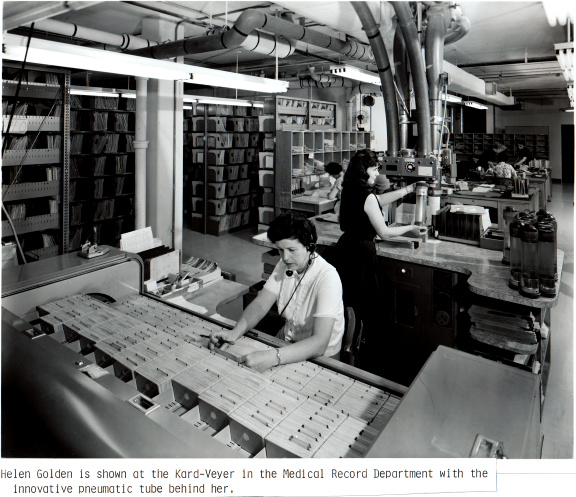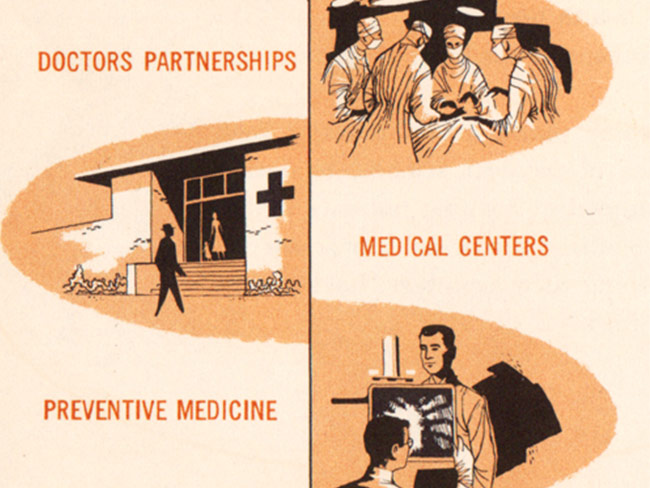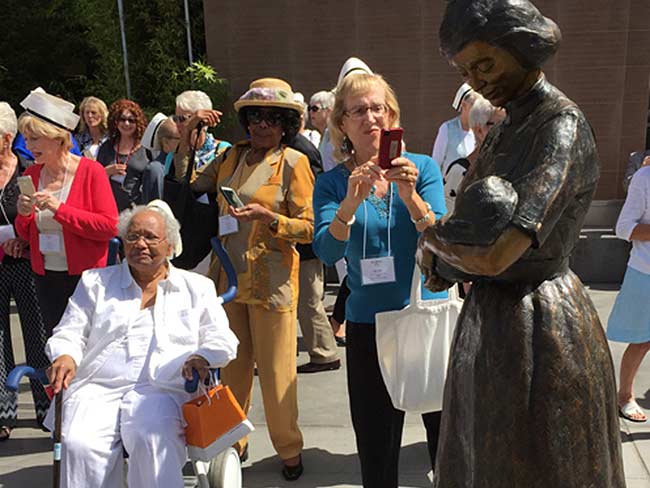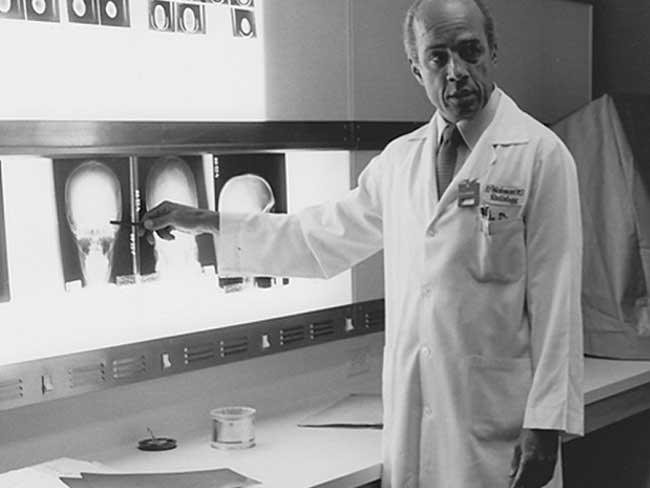Kaiser Permanente and NASA — taking telemedicine out of this world
Kaiser Permanente International designs, develop, and test a remote health care delivery system as part of a NASA program for long-duration, manned space missions.
Space Technology Applied to Rural Papago Advanced Health Care logo
How do you handle medical testing and care in a remote location? A really remote location — such as outer space?
This was one of the challenges that the National Aeronautics and Space Administration faced in the early 1970s — and it got help from one of our founding physicians and Kaiser Permanente, through what was then the Kaiser Foundation International1 program.
“KFI to Help Develop NASA-Sponsored Health System”
Kaiser Permanente newsletter, August 9, 1972
"Kaiser Foundation International became a major ($1.8 million) subcontractor to the Lockheed Missiles and Space Company to help design, develop, and test a ground-based remote health care delivery system.
"The ground-based test unit will be installed at a sparsely populated site on Earth to provide medical care to local residents. Trained physicians' assistants will employ the unit to transmit medical information on residents of the area to physicians at an established facility many miles from the remote site. If the test program is successful, it may provide system technology to improve health care and medical services to remote areas on Earth. Part of a four-year NASA-sponsored program, this concept, as applied to a remote area on Earth, will be evaluated by NASA for possible use in advanced, long-duration, manned space missions."
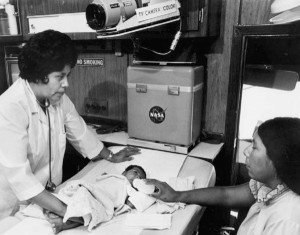
“Interior view of the mobile health unit with medical personnel, neonatal patient and mother” from Arizona Health Sciences Library
The back story is that in late 1970 Morris Collen, MD, attended a Northeast Electronics Research and Engineering Meeting in Boston that included a session on medical electronics. At that conference, he served on a panel with Dr. Walton Jones, Director of Biotechnology and Human Research at NASA.
Kaiser Permanente’s Dr. Collen, in addition to being a brilliant physician in the Kaiser Richmond shipyards during World War II, was also an electrical engineer and considered one of the fathers of the field of medical informatics. He pioneered the use of the “multiphasic” examination, a battery of prescriptive medical tests for incoming health plan members, which later became the Automated Multiphasic Health Test.
By late 1971 J.P. Nash, the assistant general manager of Lockheed, told Dan Scannell, Kaiser Permanente’s director of public relations, some exciting news:
“Very shortly NASA is expected to solicit proposals for the design, development, and testing of a Test Bed System for an Area Health Services Field Unit. This requirement has grown out of a NASA program for which [Lockheed] has been under contract for about four years called Integrated Medical and Behavior Laboratory Measurements System. IMBLMS is a four-phase program leading to the development and operation of a space flight biomedical laboratory, for research experiments in long-duration manned space flight in post-Apollo programs ....”
On Jan. 4, 1972, Dr. Collen wrote to Sam L. Pool, MD, at the NASA Manned Spacecraft Center in Houston:
“Of special interest to us . . . would be the development of a completely automated self-administered multiphasic health testing laboratory in which a person in space could perform everything himself, utilizing automated equipment which enters the data into the computer which is programmed to provide advice and instructions. We believe that it is now technically feasible to develop such a prototype and with our experience we estimate such could be done within two to three years at a reasonable cost.”
The project, as noted in the 1972 news story, would use a “sparsely populated site on earth” to test equipment, systems, and personnel. That location would be the Papago Indian Reservation [now known as the Tohono O’odham Indian Nation] in southwest Arizona, with the catchy space-age title “Space Technology Applied to Rural Papago Advanced Health Care,” known as STARPAHC. Lockheed issued a summary report in June 1974 that explained the “Part 1 – Design and Definition” of the project:
"STARPAHC will prototype a ground-based demonstration of IMBLMS space technology with two primary program objectives: (1) to obtain data for application to future spacecraft design and (2) to improve health care delivery through application of space technology. STARPAHC is designed to improve the capability for delivering health care to the Papago Indians located on the Papago Indian Reservation in southwest Arizona.
"The STARPAHC operational concept was based on utilizing the professional staff of the Sells Hospital, where the Health Services Support Control Center will be located, to provide direction and consultation to paramedical and technical personnel stationed at the remote clinics, Local Health Services Center, and the Mobile Health Unit. The interchange of information between the HSSCC, LHSC, and MHU will be accomplished by voice, data, and video communication links. Computer-based data management techniques will implement record keeping, data retrieval, and data analysis."

Black and white journal clipping with image of a surgeon using a patient viewing microscope during a procedure.
STARPAHC ended in 1977 and resulted in several advances in the nascent field of telemedicine. A 1979 article in Medical Care interviewed 47 individual care providers in the program and concluded that the major problems were the unreliability of equipment and the time required for television consultations. The major benefit cited was improved access to health care for a population not previously receiving such care near their homes. Another positive outcome noted by non-physician providers was the linkage to physicians via television and voice communications from remote areas.
In 2001 the Arizona Health Sciences Library acquired important archival materials documenting the STARPAHC project and established the Arizona Archive of Telemedicine.
Telemedicine — terrestrial and beyond — has evolved considerably since the early 1970s. In 1980 Dr. Collen would serve as a member of the NASA Workshop on Space Shuttle Studies. And Kaiser Permanente is as deeply committed to exploring its applications now as it was when the field was brand new.
1 In 1964 Kaiser Industries established the not-for-profit Kaiser Foundation International to administer foreign medical care programs. With Kaiser Permanente’s reputation on the rise, requests for consulting help started to come from places where Kaiser Industries didn’t already have a presence. Between 1964 and 1969, the international group was engaged for medical care projects in 15 African countries. When it closed down in 1975, KFI had been hired and paid for projects in 30 countries around the globe, including rural locations in California, Utah, and West Virginia. KFI was replaced by Kaiser Permanente International in 1996. Today KPI is a self-supporting subsidiary that offers educational programs about the Kaiser Permanente model and provides speakers at international conferences.




















